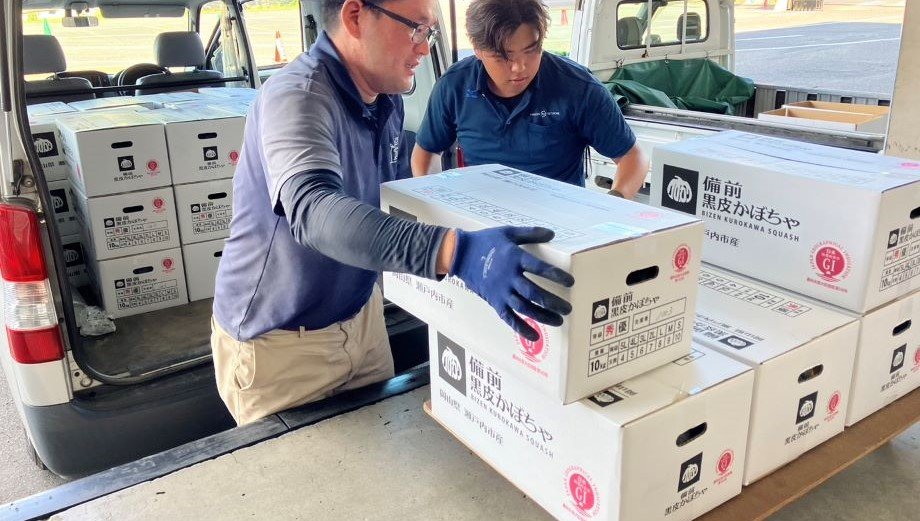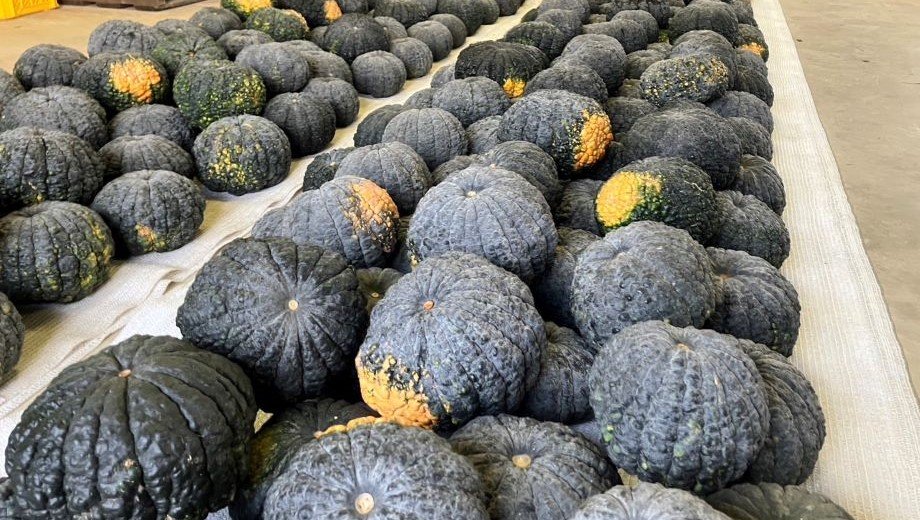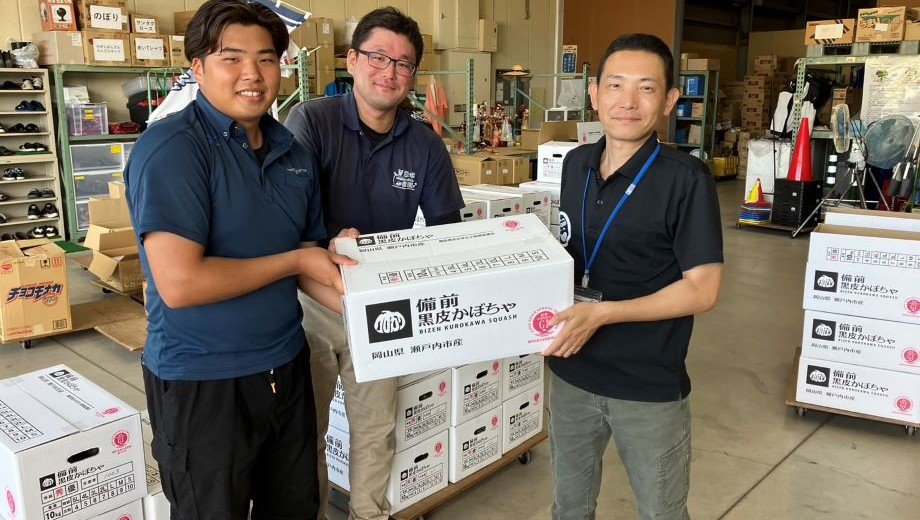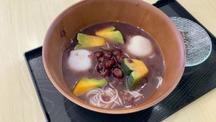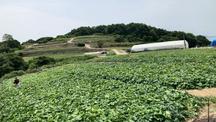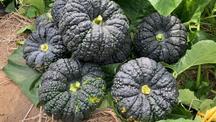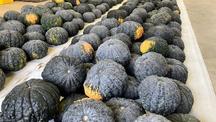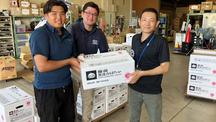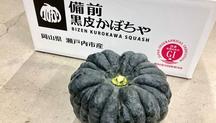Bizen Kurokawa Squash
| Registration Number | 143 |
|---|---|
| Name of the GI | Bizen Kurokawa Squash / Bizen Kurokawa Kabocha |
| Class | Vegetables/ Cereal grains/Pulses |
| Date of Protection | 2024/01/29 |
| Producing Area |
Okayama Prefecture
Setouchi City |
| Applicant - Name and Address | Bizen Kurokawa Kabocha Shinko Kyogikai (Bizen Kurokawa Squash Promotion Association) c/o 1373-5 Omachi Co., Ltd, Osafunecho Higashisue, Setouchi City, Okayama Prefecture |
"Bizen Kurokawa Squash" is a Japanese squash (1) native to Okayama Prefecture. It has dark green and deep-grooved rind and more bumps than other dark rind squashes. The rind and flesh, low in hardness and high water content, easily maintain the shape when cooked and have a characteristically smooth texture.
Because of the tradition and rarity of being a native Japanese squash, which does not exist in other areas, the squash is traded at a high price and is highly recognized by consumers.
The seeds of "Bizen Kurokawa Squash" are distributed by the Bizen Kurokawa Squash Promotion Association (the "Association").
In and after the second year, farmers are allowed to use seeds from the fruits that grew in their fields in the previous year. Still, they are requested to renew the seeds when any deterioration of the quality, crossbreeding, mutation, or other abnormality is observed.
The squash should be cultivated within the producing area, or "Setouchi City", by using the seeds mentioned above and following the cultivation methods recommended by the Association.
The squashes should be sorted and shipped based on the "Bizen Kurokawa Squash Shipment Standards Table" specified by the Association.
The producing area is a hilly region with many slopes that descend to the sea, so it has good drainage and is suitable for growing squashes. "Bizen Kurokawa Squash" is believed to have been created by crossing "Tajiri Kabocha (Tajiri Squash"), which was introduced into the producing area during the Meiji period (2), with another variety and was abundantly produced in and around the producing area in the early years of Showa (3).
In 1949, when production reached a peak, the squash was cultivated over 400ha by 3,000 farms in 8 villages, mainly in the Ushimado District in the producing area, recording shipments of 225t and 262t to areas within Okayama Prefecture and Keihanshin and Kitakyushu, respectively. The production of "Bizen Kurokawa Squash", a Japanese squash, decreased thereafter as seiyo kabocha (Cucurbita maxima) flourished. In 1995, only one single farm (20ha) preserved the strain by growing the squash and collecting seeds. It was challenging to continue collecting seeds and shipping the squash commercially.
In 2014, resident volunteers of Setouchi City started a "Group to Revitalize Japanese Squash Bizen Kurokawa" to continue protecting the variety and cultivating the plants by controlling seeds. After six years of experimental cultivation, the squash was revived, and commercial shipment was resumed in 2021.
"Bizen Kurokawa Squash" supported people's lives during food shortages in and after WWII. Families in the producing area made "Nankin Zoni (4)" using the squash as a substitute for rice and wheat, and this is still prepared as the local food of Okayama Prefecture.
- Japanese squash (Cucurbita moschata): Squash and pumpkin did not originally exist in Japan. "Japanese squash" originated in Southern Mexico and Central America and was brought by Portuguese vessels from Cambodia, a port of call, into Kyushu in the 16th century. On the other hand, Cucurbita maxima ("seiyo kabocha") originated in South America, in countries such as Peru and Bolivia, and was brought from the US into Japan in 1863. Today, not much "Japanese squash" appears on the market. "Seiyo kabocha" accounts for about 90% of the entire squash shipment to market (trading volume).
- Meiji period: An era of Japanese history extending from 1868 to 1912, during which Japan shifted from feudalism under the Shogunate to a modernized nation state.
- Showa (the Showa period: 1926-1989) is an era in Japanese history.
- Zoni: A Japanese soup containing grilled mochi, cooked chicken, and green vegetables and flavored with dashi (soup stock) and soy sauce or miso. It is a traditional dish eaten in the Japanese New Year (January) to pray for safety in the coming year. The preparation methods vary by region. In the Kansai region, white miso is often used to flavor zoni. In the Kanto region and regions in Western Japan other than the Kinki area, a clear soup called sumashi-jiru is common.

